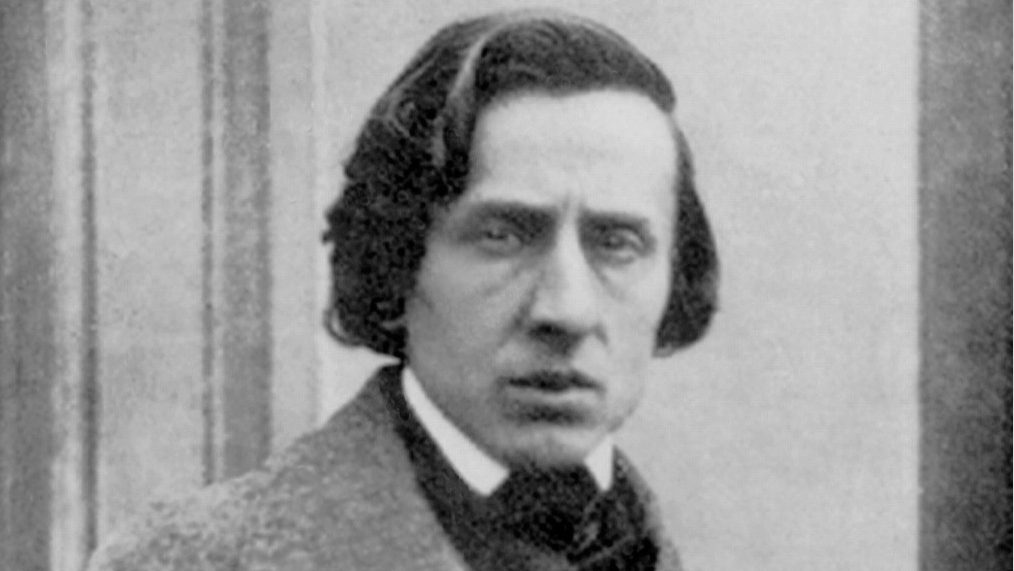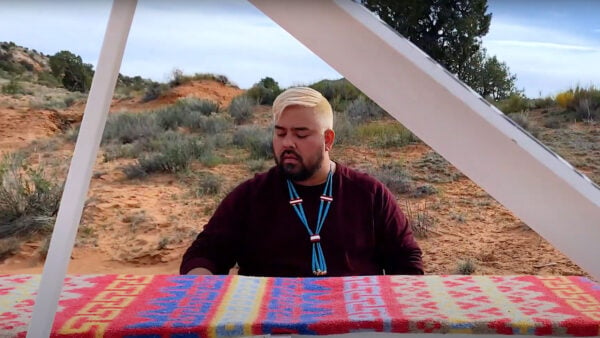
The majority of Chopin’s surviving works are for the piano. Surprisingly, however, the composer only left us with two piano concertos and a handful of other works for piano and orchestra. Polish-Canadian pianist Jan Lisiecki, who recorded Chopin: Works for Piano and Orchestra for Deutsche Grammophon, reflected on these works and why Chopin didn’t write more of them.
Expanding the piano’s color palette
“I think Chopin felt the most comfortable writing for the piano, though it was not necessarily his favorite instrument. He was simply able to use it to its full potential and to express everything that he imagined in his mind. In many ways his writing for piano and orchestra is just an extension of that. It’s not symphonic writing. It’s not writing that uses the full potential of the orchestra. It’s his imagination for the piano enlarged by the writing with orchestra.

Jan Lisiecki preparing his recording Chopin: Works for Piano and Orchestra
“It adds colors to the piano. We are given endless possibilities already at our instrument. But Chopin uses the capabilities of the winds and the strings, their richness, their sound quality to add to the piano’s possibilities and the color palette. It’s a gift that he gave us with these orchestral pieces.”
“In a Mozart or Beethoven piano concerto if you removed the orchestra and told the pianist to play their part alone you’d be left with a bare bones structure. There would be some beautiful themes, some beautiful moments, and then there would be these very dull and uninspiring passages because you would be missing the core of the work. Now in Chopin if you take away the orchestra for the most part you would still end up with a fully-fledged and well-developed work. When the orchestra comes in it adds something – another layer – not instead of the piano, not in place of one of the piano themes or capabilities, but yet another layer, and more beauty.”
Challenges for modern musicians
“I think Chopin also had an interesting vision of how the orchestra instruments sounded which didn’t always translate well into reality. He’d write small details that were very important but could never be heard in the modern concert hall and are even difficult and challenging to register on a recording.
“For example, there are solos by woodwind instruments that don’t have the power to project and don’t have the power to actually be louder than the piano, especially the modern pianos. We’re dealing with writing that sometimes is very thin. As a pianist that just requires you to adjust to find also the color of the orchestra and gather inspiration from what those musicians are doing and how they’re shaping the phrases.”
Rondo à la Krakowiak in F Major, Op. 14
“The Rondo has the most beautiful opening. The French horns playing an F and a C and then the strings coming in with a cushion of sound – so warm, so rich and the piano plays this piercing lonely melody that’s somehow positive. You have the dance-like elements and a lot of passagework for the pianist side by side with the melodies spun in the orchestra. There’s a fascinating bass that leads in places. But the soaring melodies are played by the woodwinds. And considering that I’m playing a thousand notes at once and it’s incredible passagework, I think it takes a high level of collaboration between the pianist and the conductor and orchestra to make it balanced and well-rounded.” Hear the complete work on YouTube.
Andante Spianato and Grande Polonaise Brillante in G Major / E Flat Major, Op. 22
Watch Lisiecki perform Chopin’s Grande Polonaise Brillante in G Major from Op. 22 below.
Variations on “Là ci darem la mano” From Mozart’s Don Giovanni, Op. 2
“A good set of variations starts with an excellent melody, and Chopin made a very wise choice with this one. The way he approaches it is quite fascinating. There’s an introduction that not only hints, alludes to the theme. He presents the theme very simply, very beautifully, elegantly. Between every variation, the orchestra plays an interlude, almost to welcome in the next round of the variation. Chopin’s approach to the variations themselves is also fascinating because to me it almost alludes to the etudes that he wrote in that every variation presents a different technical challenge. It’s very interesting how he shapes that and creates this work from a very simple melody.
“You have the variations, for example, where there’s a dexterous passagework where the melody is hidden in scales. Basically where I don’t really have solo notes that would show the melody at all – it’s just hidden in a continuous stream of notes. There’s a very dark variation where Chopin turns Mozart’s theme into something dramatic, something painful. There’s also the ones where I feel almost like I’m playing one of the Preludes, where it’s just the thoughts – a very simple thought, a very quick, complete thought, but one that passes by very quickly.” Hear the complete work on YouTube.
Nocturne in C Sharp Minor, Op. Posth.
Watch Lisiecki perform Chopin’s posthumously published Nocturne in C Sharp Minor in the video below.
Fantasy on Polish Airs, Op. 13
“The themes that Chopin uses as a basis for the fantasy were, at the time at least, very well-known in Poland. They have an interesting history but what is more interesting is that they’re concrete and they’re very separate. Yet Chopin is able to weave them into one continuous work. It doesn’t have sections. It is one idea. He links these melodies that have nothing in common other than being Polish into one fantasy which is a skill. And I think he does it remarkably well.
“Chopin had the incredible capability to always include Polish elements in his music and I think he wanted to. Most of his life he spent longing and yearning for his country after he left and could never return. His music is quintessentially Polish in many ways. But the fact that he was very internationally educated and also became an international citizen influenced the way he wrote. It wasn’t purely Polish music. It was music that had many different facets and was written for many different reasons, not only to celebrate Polish events.” Hear a complete performance on YouTube.






